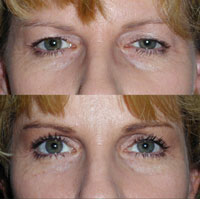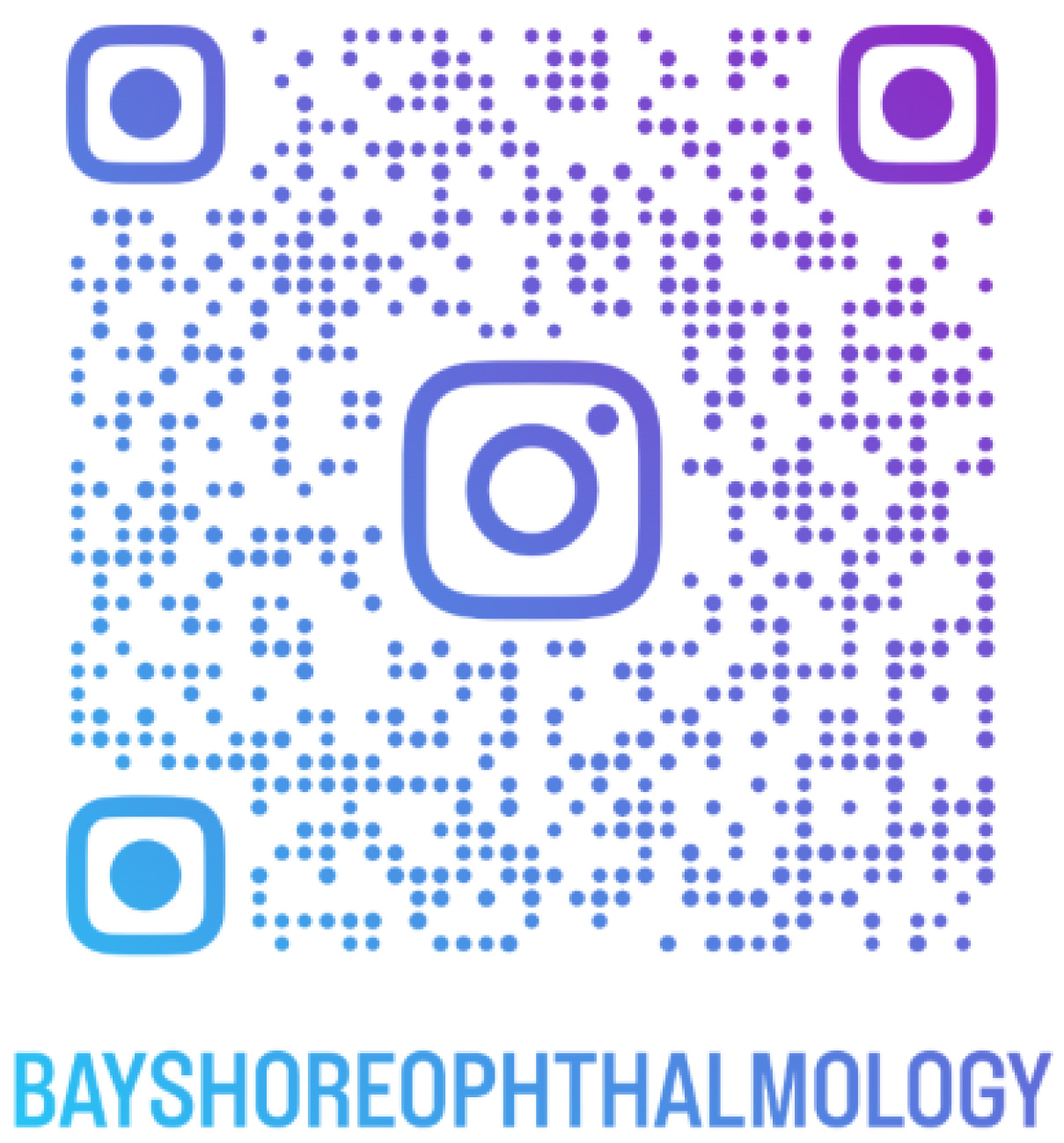Blepharoplasty is plastic surgery of the eyelids. In this common procedure, excess skin and fatty tissue are removed from around the eyes. Drooping eyebrows can also be corrected at the same time.
Why is blepharoplasty performed?
Blepharoplasty can be done to improve both visual function and cosmetic appearance. Excessive upper eyelid tissue can block the upper field of vision. Correction of overhanging skin folds will improve the function of the upper eyelid and peripheral vision. Even if vision is not affected, blepharoplasty may be performed to improve a sagging, tired appearance.

Before Surgery – The skin below the eyebrow sags, causing a loss in the definition of the eyelid and a tired look.
After Surgery – After the removal of excess tissue, the eyelids regain their definition, resulting in a younger, more energetic look. Incision lines are made on the underside of the eyelid or hidden in the natural skin folds so they are hardly visible during healing. After healing they are virtually unnoticeable.
What causes the excess eyelid tissue to form?
Due to the effects of the sun, diet, pollutants, gravity, heredity and poor skin care, the skin around the eyes begins to loosen and relax. Over time, sagging occurs from the force of gravity pulling on the eyelid tissue. Changes also occur in the fatty tissue located just beneath the skin. These normally firm fat pads begin to protrude, causing bulges or “bags” to form under the eyes.
What are the symptoms that indicate blepharoplasty is needed?
In addition to changes in appearance and a limited field of vision, excess eyelid tissue can also cause physical discomfort. The weight of the excess eyelid tissue may cause brow ache and fatigue. In some cases, excess skin may cause the eyelashes to turn in and irritate the eye.

Before Surgery – Notice how the skin above the eyelashes sags and hangs over the eyelids. The excess weight causes the eyelids to partially cover the pupil, interfering with vision, and making the person look tired.
After Surgery – Removal of the excess upper eyelid tissue allows the eyes to open wider. Both the patient’s vision and appearance are restored.
How is blepharoplasty performed?
Excess skin and fatty tissue are removed from around the eyes. Upper and lower incision lines are marked along the natural skin folds of the eyelids. The fine incisions made are hidden in the natural skin folds or lash line of the eyelids and are almost invisible during healing. In some cases with surgery of the lower eyelids, an incision is made on the underside of the eyelid so it is completely invisible during healing.
Blepharoplasty is usually performed on an outpatient basis under local anesthesia, depending on the amount of reconstruction needed, the patient’s preference, and health.
Quiet rest with the head elevated is usually recommended after surgery to relieve any soreness and discomfort. Cold compresses may be applied to reduce swelling and bruising which may last several days. You will need to clean the area around the eye during healing and in some cases eye drops may be recommended.
Where fine sutures are used they either dissolve on their own or are removed a few days after surgery. Temporary blurred vision and excessive tearing may also be experienced after the procedure.
What are the results of blepharoplasty?
The results of plastic eyelid surgery can be quite dramatic. However, the final outcome depends on many factors including the extent of reconstructive work required, the patient’s skin structure and age, and the healing process.
Expected benefits and possible complications should be discussed with your doctor prior to having surgery. Incision lines, which are hidden in the natural skin folds (upper lids), may initially appear as small red marks which fade over time. Ultimately, the fine hairline scars become virtually unnoticeable. In most cases, blepharoplasty can successfully improve visual function and physical appearance.

Before Surgery – Blepharoplasty is a common procedure for both men and women. Tired sagging eyes have a negative effect on appearance and one’s self esteem.
After Surgery – Incisional lines are hidden in the natural skin folds or on the underside of the lower lid and appear virtually unnoticeable.

